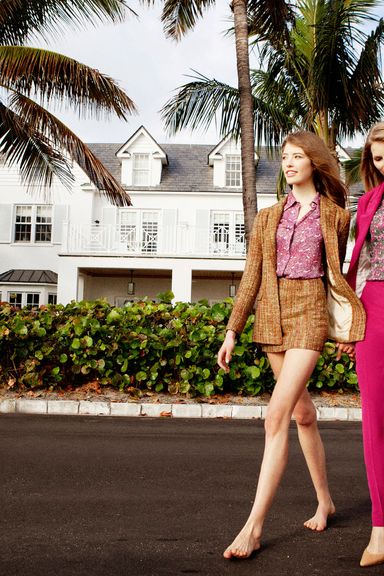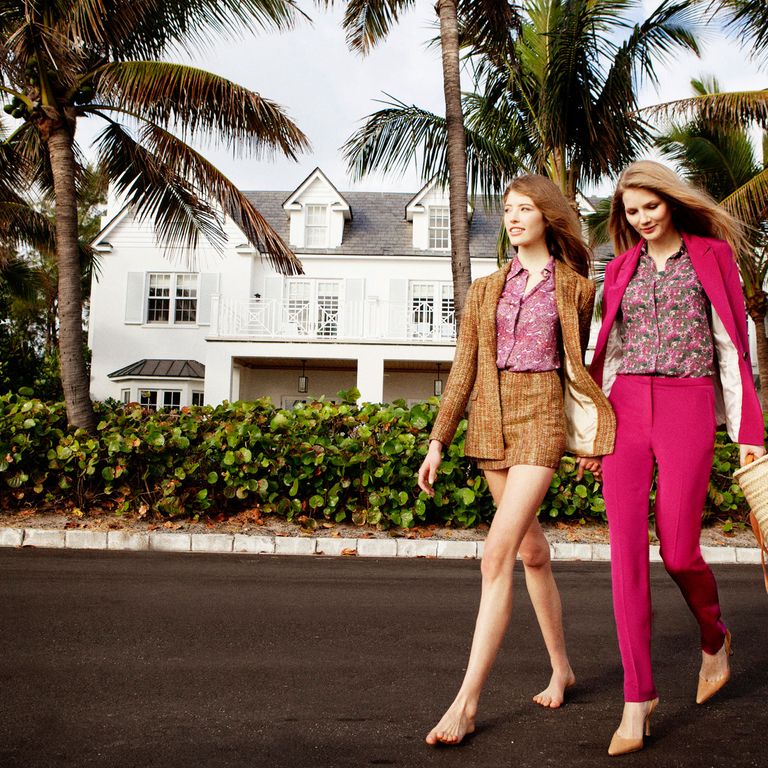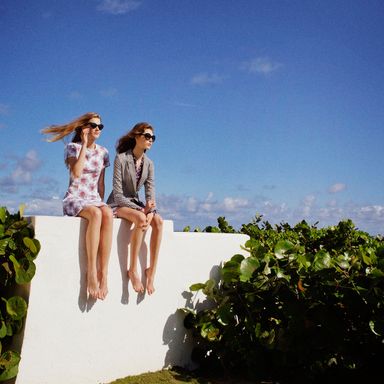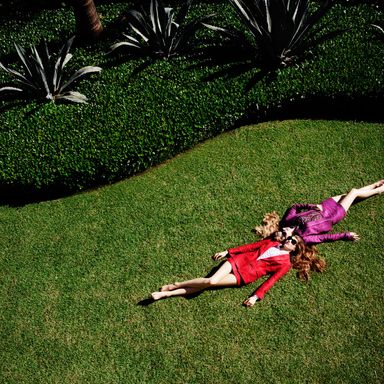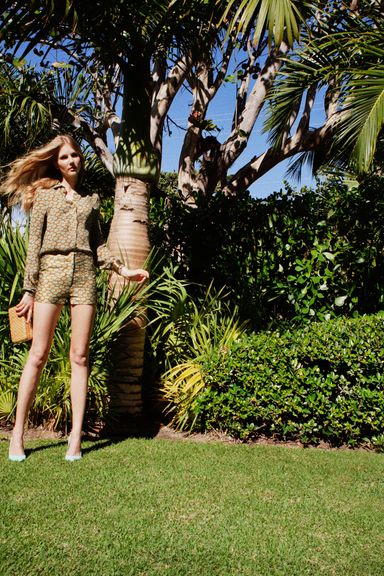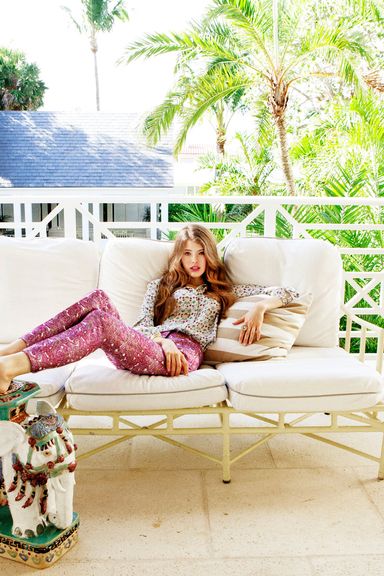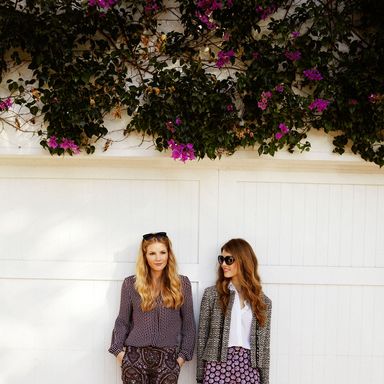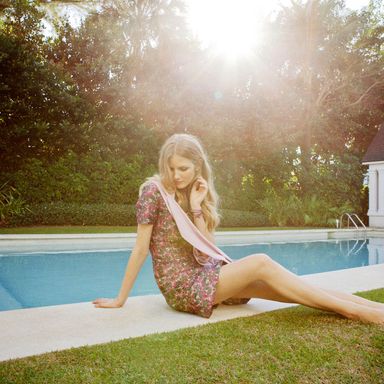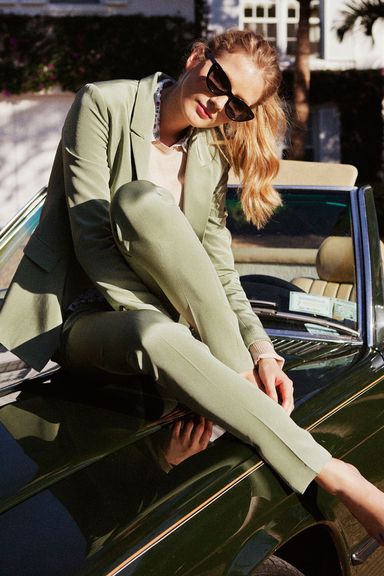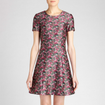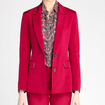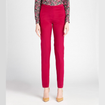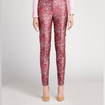The Young Designer Bent on Creating New Classics
It could be said that 25-year-old Maggy Schultz was destined to be in fashion. At 4 years old, the sartorially precocious Schultz was referring to her denim tops as “chambray shirts” and speaking up at meetings headed by Mickey Drexler (her mother worked with him at Gap). Today, she’s at the head of her very own brand — a collection of vivid prints rendered in sixties and seventies silhouettes. It’s a series of juxtapositions that manages to make sense: classic items colliding with “not-so-basic” prints; a vintage Montauk surf look merging with contemporary design; and “preppy meets pinup,” the words she uses to describe her own style.
It helps, of course, that her father co-founded Urban Outfitters and her mother worked as Drexler’s right-hand woman. “From a young age, I was very involved and very opinionated in fashion. My parents kind of tease me about it,” Schultz explained. “As a kid, I never really played with toys, I just played with clothes.” Rather than studying fashion design, the young designer opted to pursue a liberal arts education, studying a complex mix of art history and philosophy with “a bit of psychoanalysis as applied to the visual” at NYU. Throughout, she dabbled in the fashion realm, interning and later working as an assistant stylist at both American and British Vogue. When she became frustrated by the dearth of classic silhouettes to wear to work, she decided to design her own everyday basics. The result: her own line, christened Maggy Frances (a combination of her first and middle names), filled with camel blazers, plaid miniskirts, silk blouses, skater dresses, and personally designed prints that launched just over a year ago in October. The Cut spoke to the designer on her love for vintage, her fashion pedigree, and surf culture. Click through the slideshow below to see her clean-cut designs (ranging in price from $150 to $475).
You went to NYU. Where did you get your design background?
Well, I don’t really have a design background. [Laughs.] But the line came from my frustration of looking for specific pieces that I felt were no-brainer in a way, classic, that I could never find. I was working as an assistant and there were these easy, chic pieces that I wanted to wear every day. I think [the pieces in my line] are classic. I was wearing them, just still working, and people started to take notice.
How was the transition from being a stylist to a designer?
I actually moved to London and was enrolled in fashion school just for a semester and then was also working at British Vogue. When I moved back to New York and was finishing up school, I was freelancing and it was becoming a lot less exciting because I was more familiar with it and more experienced doing it, but I felt like I wasn’t getting the traction that I wanted. I still felt like I needed to be paying my dues more and doing that for a little while longer. I don’t know, I guess magazines weren’t the same kind of place they were before I started, which was before the recession. Bloggers were starting to take over. I was forced to reconsider everything and designing was something I wanted to do all along. I had imaged that I would do it later on in my career; after a certain point, when people started to take notice of the clothes I was wearing, someone said, “You know, you should just try it out.” And I did.
There’s tons of tailoring and paisley prints in your collection. What inspired those designs and silhouettes?
I was buying a lot of vintage and customizing vintage, especially prints. I felt like contemporary prints were really loud; you see yourself in a photo and a few years later you think, Oh! What was I wearing then? With prints, you have to be careful with that. I kept that in mind and I was also on a budget, and I wanted to buy things that I could actually wear over and over.
Your mom worked at Gap and your dad co-founded Urban Outfitters. Were you more of a Gap girl or UO girl growing up?
I was more of a Gap girl at the time. When I was growing up, I was too small to fit into Urban Outfitters, to my dismay. Because when it started, it was really very cool, really this counter-cultural place. But I did used to wear the baby tees. It was very nineties grunge. But I was definitely a Gap girl all the way. I mean, everyone was, right? [Laughs.]
Did your parents encourage you to join the fashion industry?
I think they always knew it was coming. I always had something to say when I visited them at work about what they were doing, even at the age of 5. They wanted me to explore other options. Their thinking was that it’s a tough industry, so they wanted me to make sure that it was the right thing and that I wasn’t just doing it because they were. But I think they knew all along that that was never the reason.
So your current collection was inspired by surf culture?
Yeah, a bit. So far everything that I’ve been designing has been inspired by sixties silhouettes. To me, they’re very contemporary. I like a higher hemline, they’re kind of neater, they’re sexy because they’re nipped at the waist. But they’re not body-conscious, so they tend to be flattering. I think they’re universal and classic, so it’s kind of like this prim and proper surfer — I was calling her a posh surfer girl because she’s wearing a tweed cropped jacket but the tweed is floppy, it’s kind of fringed and undone. The idea is that it picks up different colors and I mix-and-match it. I wear mine with cutoff denim and messy hair. Or you can wear it with a matching skirt and look a little more put together, like you’re in a little suit.
Who is the girl wearing these clothes? Who’s your ideal customer?
I really try to make the collection universally appealing. When I design it, and especially when I go through and edit it and merchandise it, I’m always thinking about everyone. So far we’ve actually covered all the bases: girls in high school, college, my age, and friends of my moms and even older. I think when you put them all together, the look is — I’d say, for a girl who’s in her twenties or thirties who cares about the way she presents herself and who has places to go. But when you pick it apart and wear them as separates, the little jacket with jeans or the blouse, you can wear them in your own way.
How did you come up with your dragon insignia?
Well, I like a little logo, always. I like anything that’s somewhat memorable and an animal seemed classic. It was a few different things: It had a sixties and seventies rock-and-roll feel to it, and I have an obsession with sixties and seventies aesthetic. And also I’m superstitious, and so is my dad. Growing up, my dad spent a lot of time in China and was superstitious about certain things in Chinese culture. I was born in 1988, the year of the dragon, which is considered very lucky, and I also launched my business in 2012, the year of the dragon, so it just seemed fitting.
Who are some celebrities that you’ve already seen wearing your stuff?
Quite a few have bought them — AnnaSophia Robb wore a dress on television; Gwyneth Paltrow borrowed a suit recently, but I don’t know if she’s going to wear it or not. So maybe! Who knows!
